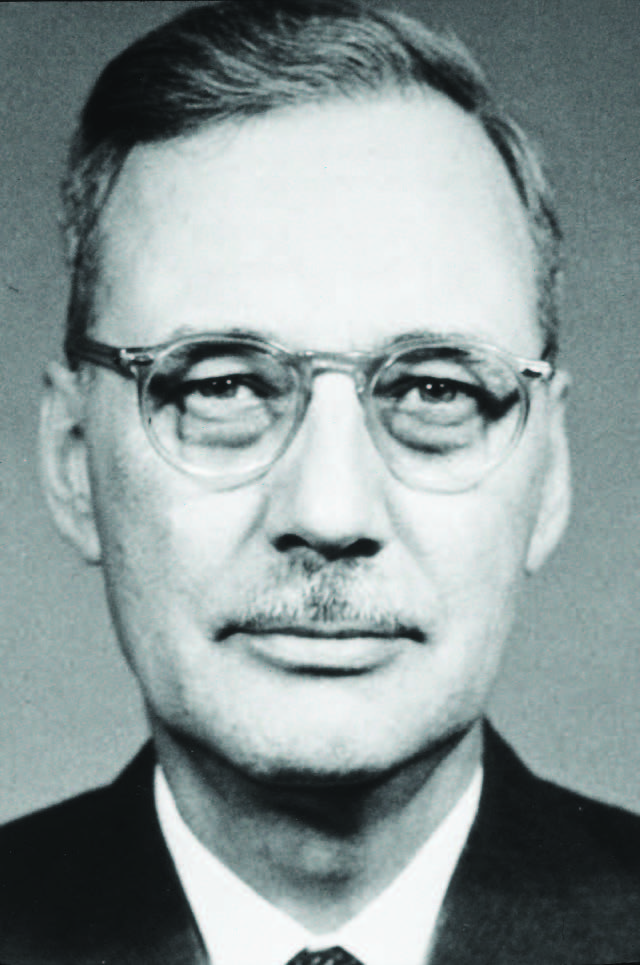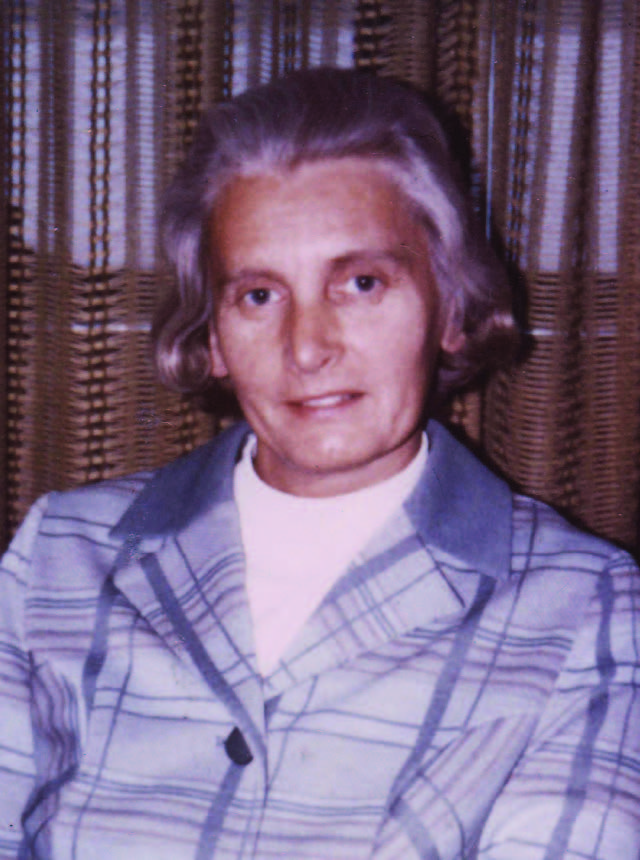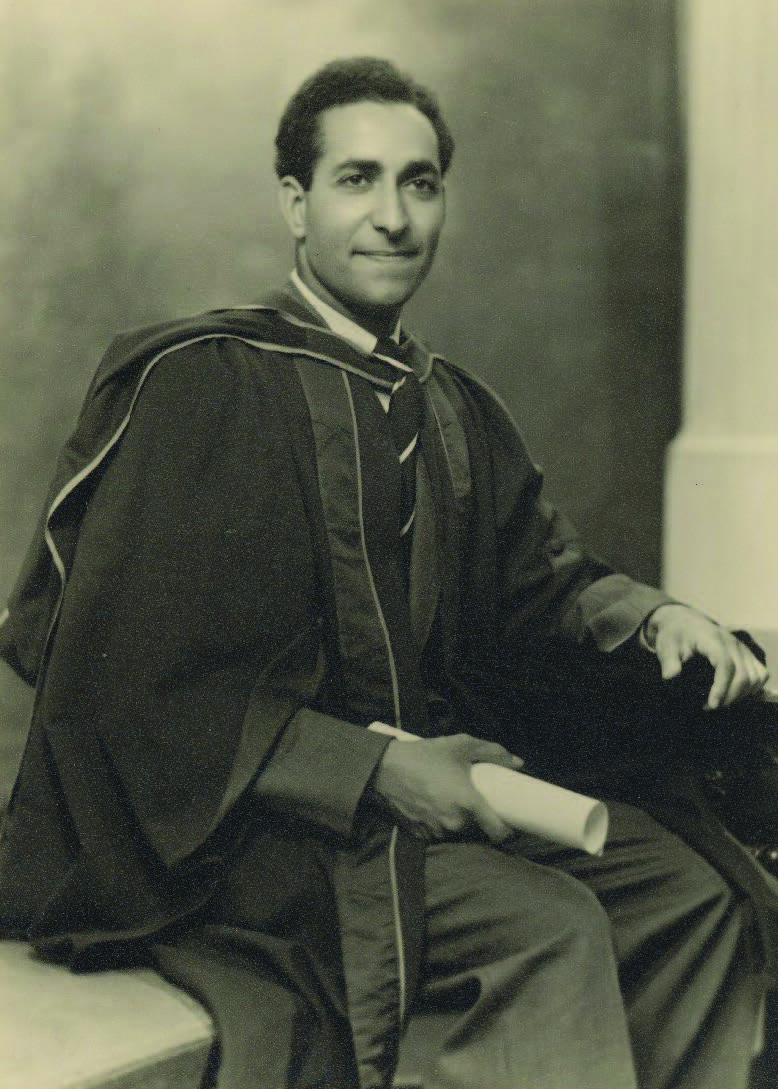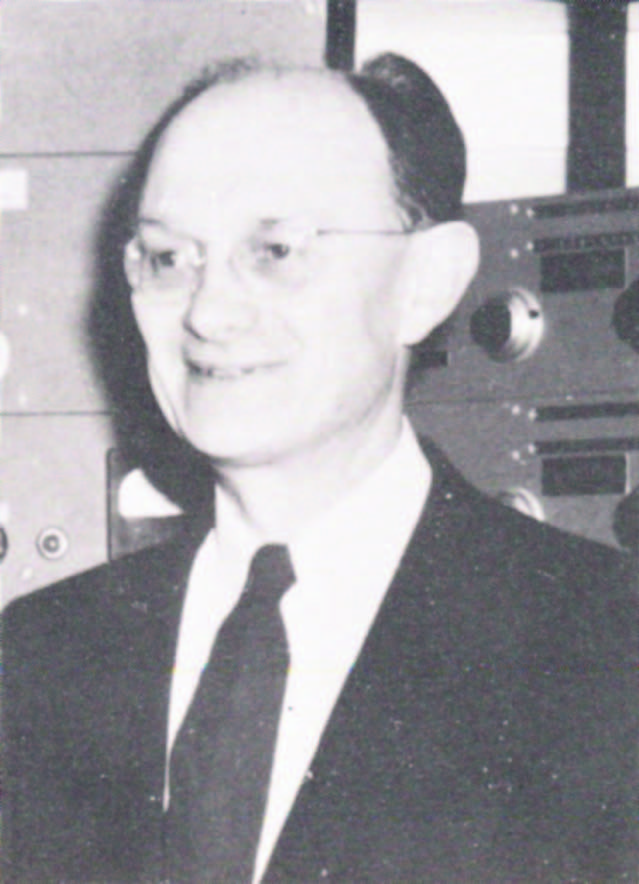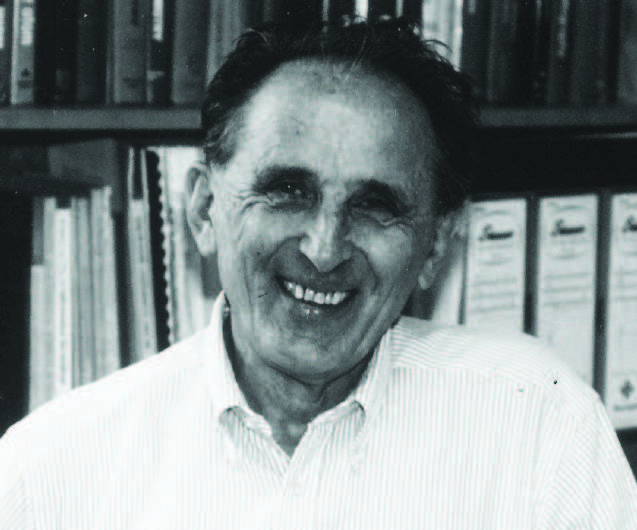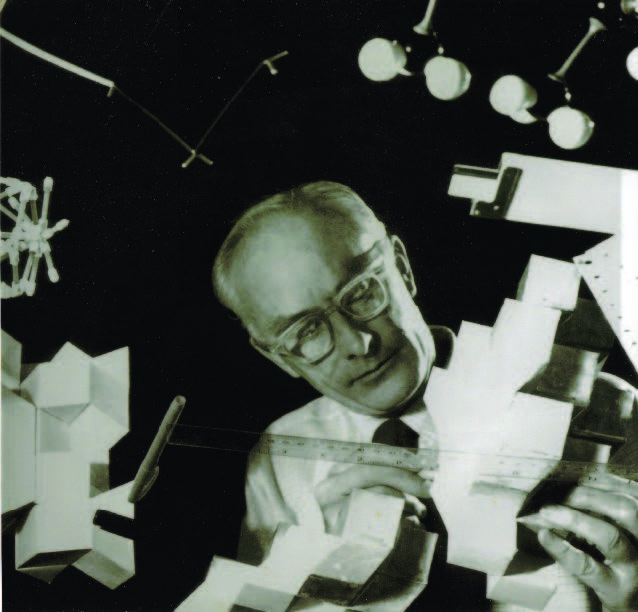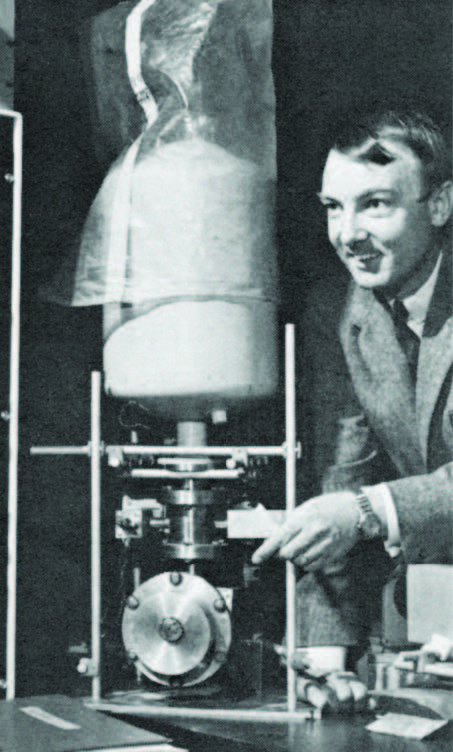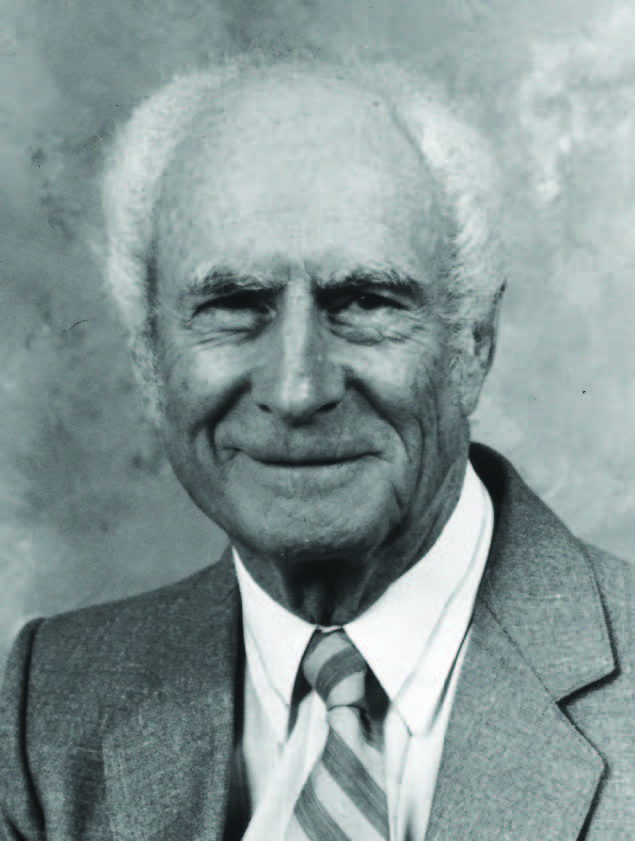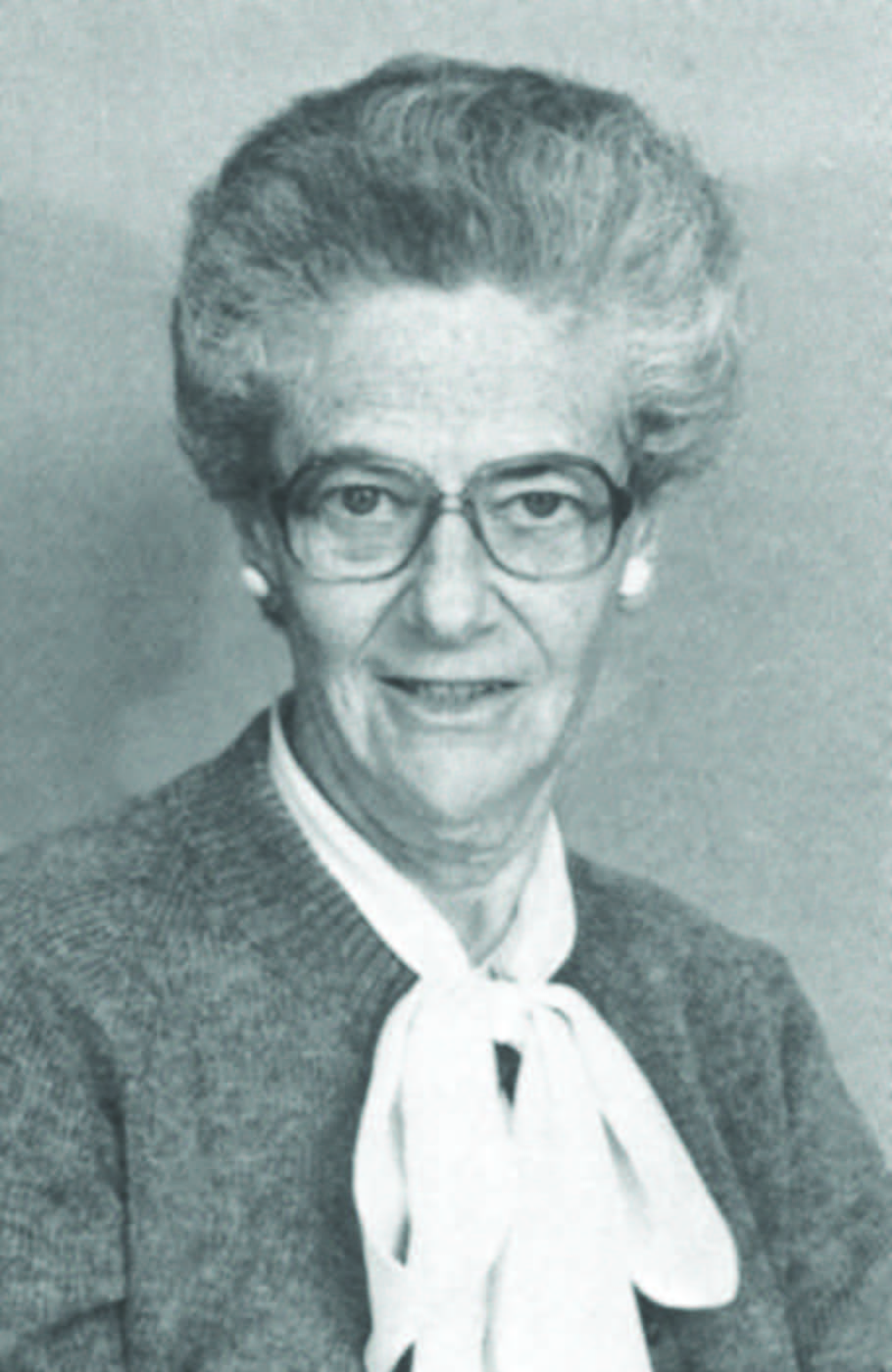Crystallography in CanadaSome Early Canadian Crystallographers 6-215 MacKay St., Ottawa, Ontario, K1M 2B6, Canada
Probably the first Canadian-born scientist to have an important influence on the development of crystallography in Canada was William H. Barnes (Fig. 1). Born in Montreal in 1903, the son of a physicist, he was educated at McGill University, receiving B.Sc., M.Sc. and Ph.D. degrees there, his Ph.D. in 1927. He subsequently spent three years on Fellowships at the Royal Institution in London under the supervision of Sir William H. Bragg. While there he developed his interest in the analysis of crystal structures by X-rays, and carried out pioneer work on the structure of ice. He returned to Canada in 1930 to join the faculty at McGill University. Legend has it that he carried on low-temperature crystallography at McGill by positioning a camera outside his laboratory window in winter. In 1946 he obtained a Guggenheim Fellowship and went off to MIT to spend a year working with Prof. Martin Buerger. In 1947 Dr. Barnes came back to Canada in order to establish an X-ray Diffraction Section in the Division of Pure Physics at the National Research Council of Canada, and he remained Head of this section until his retirement in 1968. A few years after Dr Barnes' arrival, the NRC Post-Doctoral Fellowship program was established, enabling many young crystallographers from abroad to spend a year or two working in his laboratory. Some of them returned subsequently to their own countries to carry on crystallography there, most notably David Phillips [later Lord Phillips of Ellesmere], who went back to Britain and later became Prof. of Molecular Biophysics at Oxford. Several people from Dr. Barnes' lab later set up new crystallography research or teaching centres in Canada, and so his influence spread in this country. Dr. Barnes played a major role in persuading the National Research Council in 1948 to adhere to the IUCr for Canada, and was Chair of the Canadian National Committee for Crystallography from 1948 until 1966. He served very successfully as Chairman of the Organizing Committee for the IVth IUCr Congress in 1957 in Montreal. From 1960 until 1966, he was a member of the IUCr Executive Committee. His main research interests were structural studies of vanadium minerals, the use of powder diffraction to identify narcotics and drugs, and the determination of structures of drug-related compounds.
Two young women crystallographers from Glasgow, Maria Przybylska and Violet Shore, were the first two people to receive NRC Postdoctoral Fellowships and both of them went to work with Dr. Barnes, arriving in December 1949. Both had earned doctorates in the lab of J. M. Robertson. Violet Shore went back to Britain after her fellowship years, while Maria Przybylska (Fig. 2) set up a new lab in the Division of Applied Chemistry at NRC and a few years later moved to the Division of Pure Chemistry, also at NRC, and started up another group. Larry Calvert (Fig. 3) came from New Zealand to the Barnes lab in 1952, and after his Fellowship was completed, set up his own group in the Division of Applied Chemistry. This group later included Eric Gabe and Yvon LePage. Farid Ahmed (Fig. 4) joined the Barnes group in 1955 from England, where he had received his doctorate in Durward Cruickshank's lab. Dr. Barnes could foresee the important role that general -purpose digital computers could play in crystal structure determination and refinement, and encouraged Dr. Ahmed to develop suites of computer programs for the most advanced computers accessible to the group. Over the years, programs were written for the Ferranti FERUT, the IBM 650, IBM 1620, the IBM System 360, and the IBM 3090. Farid Ahmed remained a member of the original group until the groups in Pure Physics and Pure Chemistry merged in 1968, and eventually was appointed head of the merged group. He served in that capacity until his retirement in 1990. Al Hanson (Fig. 5), a Canadian who had received his Ph.D. in Manchester, was also an early member of the Barnes group, arriving in 1955 and staying until 1978, when he left to start a structural lab in NRC's Atlantic Regional Laboratory in Halifax. Jim Trotter (Fig. 6) arrived at the Barnes lab in 1957 from Glasgow as a postdoctoral fellow, and in 1960 he went west to Vancouver, and started crystallography at the University of British Columbia. In the ensuing 38 years he trained many crystallographers in his lab there. In 1959 David Brown (Fig. 7) arrived at McMaster University from the University of London (UK), initially to help Howard Petch, an NMR chemist, build a neutron diffractometer for the reactor at McMaster. David stayed, subsequently built a crystallography group, and is still active there now. The 1940s also were the time that the mineralogists became active in Canada. Leonard Berry (Fig. 8) joined the faculty of Queen's University in Kingston, Ontario, in 1944 as Mineralogist and Crystallographer, and remained there for 38 years. Dr. Berry was a member of the Canadian National Committee for Crystallography from 1948 until 1970, and served as its Chairman from 1966 until 1970. Mineralogy was also represented in western Canada, by Robert Ferguson (Fig. 9) who began his career at the University of Manitoba in 1947. Although he was in the Dept. of Geology, he supervised several chemical crystallography students there, including Michael James, Louis Delbaere, and me, in addition to mineralogy graduate students. Upon his retirement in 1985, he was appointed Professor Emeritus and carried on his research for some years. Even before the days of Berry and Ferguson, J.D.H. Donnay (Fig 10) spent from 1939 until 1942 as a Professor at Laval University, and thirty years later JDH returned to Canada to be with his wife Gabrielle Donnay (Fig 11) when she was appointed Professor of Crystallography at McGill. The first person doing crystallography in the Maritime provinces was probably Osvald Knop (Fig. 12), who was born in Czechoslovakia in 1922 and arrived in Halifax in 1957 after stays at Caltech and Laval University. After 7 years at Nova Scotia Technical College he moved to Dalhousie University, also in Halifax, and remained there for many years, as an Emeritus Professor after retirement. Canada can also lay partial claim to two famous crystallographers who ended up elsewhere. A.L. Patterson, although he was born in New Zealand, grew up in Montreal and received his university education at McGill. He completed his Ph.D. work there in 1928. He left McGill, after an additional year as a lecturer, to join Wyckoff's group in New York. A.J.C. Wilson was born in Nova Scotia and received his university education there to the M.Sc. level, which he obtained in 1936 at Dalhousie in Halifax. He apparently did not do any crystallography until his doctoral work at MIT. I have had to employ an arbitrary cutoff limit, and have probably inadvertently missed some people whom I should have mentioned. If so, my apologies. Now there are crystallography groups in many Canadian cities, so our predecessors' efforts have borne fruit. Thanks are due to the following for providing photos and slides: Farid Ahmed and Margaret Pippy in Ottawa, Margaret James in Halifax, Tony Secco in Winnipeg, Ann Trotter in Vancouver, and Marcia Colquhoun in Buffalo. [based on after-dinner remarks July 24, 1997; ACA conference, St. Louis, Missouri, USA] |

